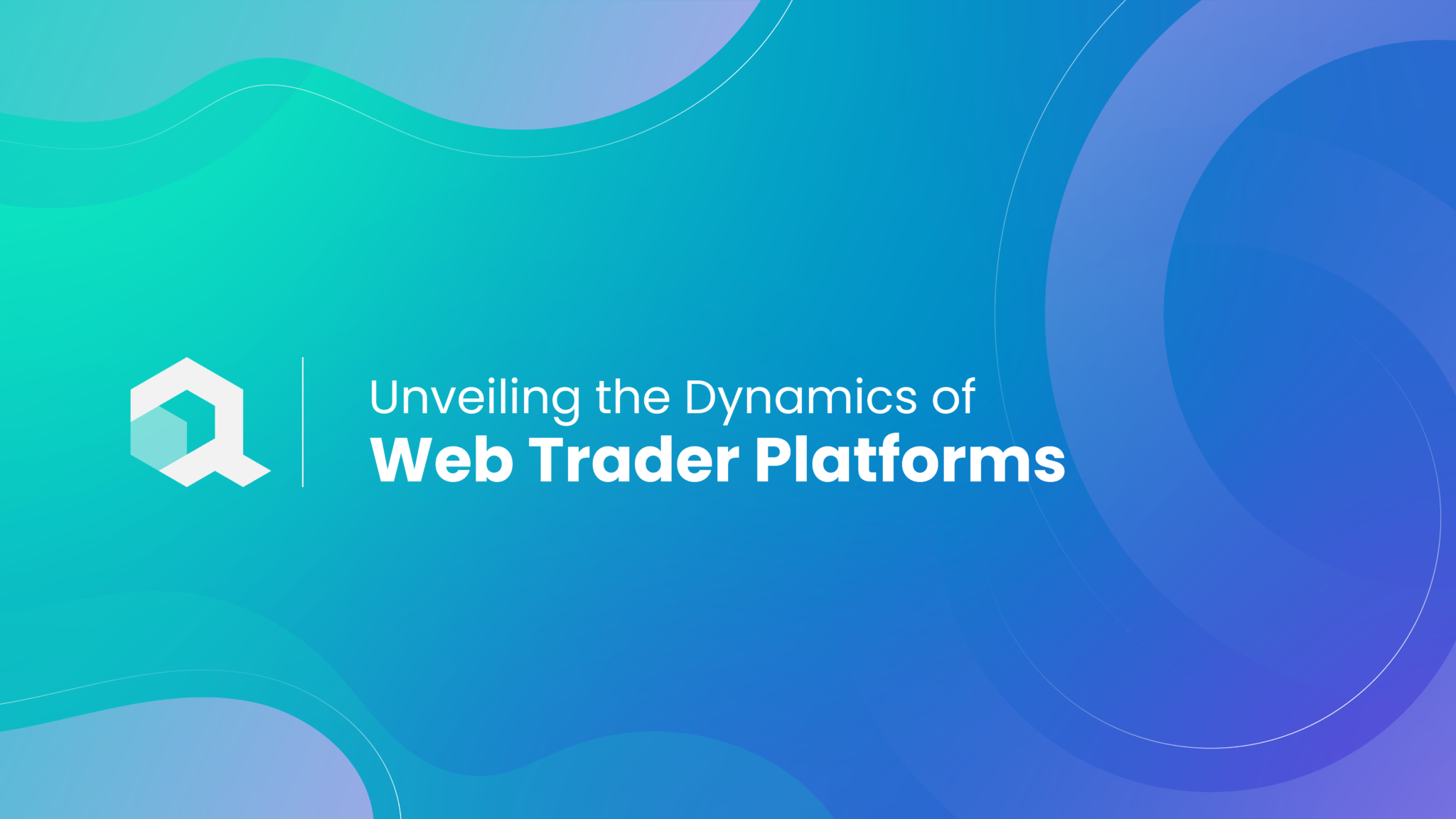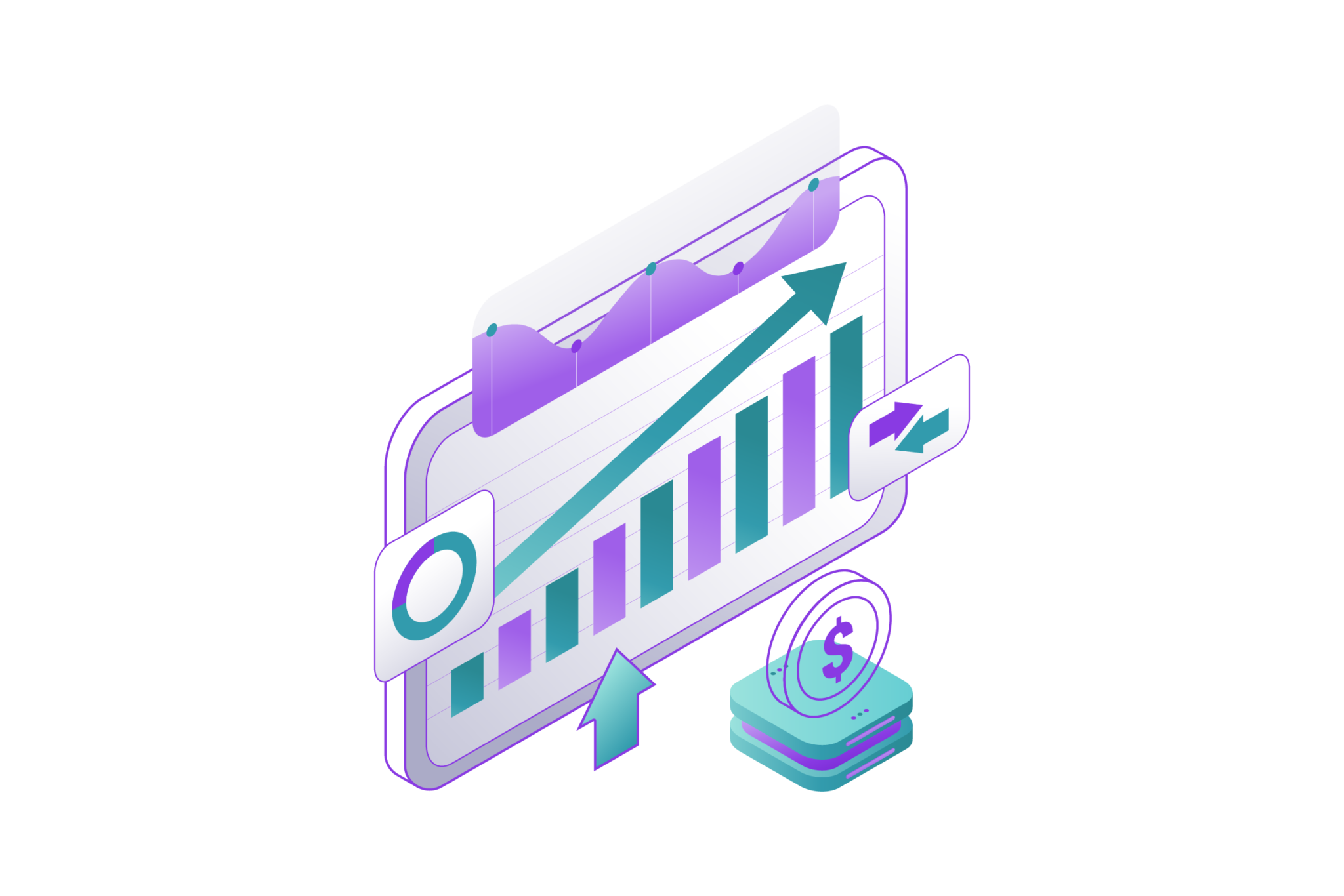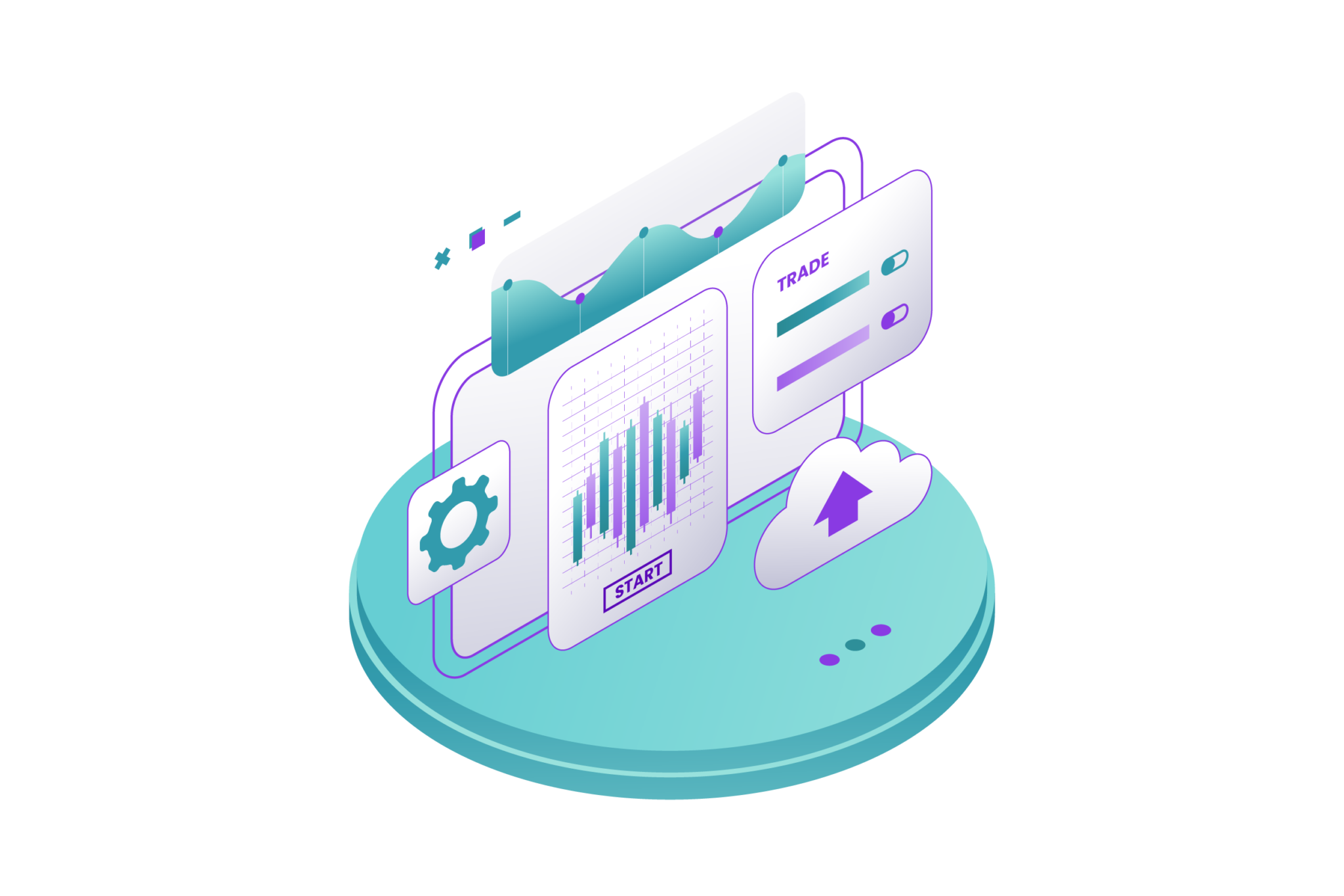
The Web Trader Platform has strong instruments that help transform e-trading. Web Trader Platform with many empowering capabilities for traders exists. These include live market data, customized graphs, technical analysis and others that provide the insightful information required for informed decisions. Such tools could be exploited by traders to improve analysis and have an upper hand against others in the market.
Learn more about essentials for a trader, including real-time market data and social trading. The major characteristics, security products, and future scene of the Web Trader Platform will be outlined in this piece.
Basics of Web Trader Platform

Pioneering web based platforms such as Web Traders redefine how traders interact with the markets by offering highly innovative functions aimed at enhancing the end-user experience. The key element here that brings in changes is the critical contribution of real-time market data, which serves as the foundation that people refer to for relevant and most recent information to allow them to make logical decisions.
These platforms have well-polished user interfaces meant for any trader, regardless of their skill level. These interfaces are user-friendly and bring into perspective the complications in the financial market, thus offering an opportunity for more people to participate. This is a major step towards democratizing access to trading and ensuring that trading is not limited only to professionals who are experienced in the financial markets
Apart from being accessible, the Web Trader Platform has built-in charting packages and technical indicators. Such highly advanced instruments give a clue to what traders should be doing to become successful. Not anymore for professional traders, as the capability of going deeper into the technical analysis and interpretation of complex charts has been made accessible by the introduction of such trading platforms in every user’s fingers. The democratization of analytic tools makes it possible for experts as well as novice traders to explore and cope with the market environment in a successful way.
Additionally, they also advance their Web Trader Platform with the provision of advanced risk management aspects. Risk management is very crucial for every trader, and these platforms are aware of this fact as they provide tools that help minimize losses and optimize the risk reward ratio. Emphasis placed on risk management goes a long way towards ensuring that a trader’s portfolio is sustainable for as long as possible.
Also Read: Market Maker Options: Definition and How They Make Money
One of the most notable things that makes the Web Trader Platform different is the integration of the latest technology in social trading. Such a collaborative approach changes the process of trade into a common one. The users are able to see what these successive traders are doing through these ecosystems. It creates a community that helps even first-time market entrants learn a lot. Social trading has developed an atmosphere of cooperative learning where the traders teach each other based on the common interests they share.
Understanding such basic traits of the Web Trader Platform is not just optional; rather, it is mandatory for any trader who wants to receive the real benefits and opportunities offered by the trading environment. One can be an experienced trader perfecting his strategies, or he may just be starting out in financial matters. It all depends on how well one understands these principles; it sets the groundwork for a more fulfilling and fruitful trading trip.
However, Web Trader Platform are more than simply tools; they are doorways into an inclusive and empowering future for web-based trade. Through the elimination of complexity, developing useful instruments and encouraging working together, we create a new way of interacting between people and financial markets.
Web Trader Platform Key Features
The Web Trader Platform offers a plethora of features designed to empower traders. From real-time market data and customizable charts to technical analysis tools, these features provide the necessary insights for informed decision-making. What are those?
1. Real-time Market Data
In the modern, competitive trading environment, real-time market information serves as a lifeline for sensible decision-making. The timeliness of information enables traders to react swiftly and make wise calls based on price differentials. With this, it gives an overview of the prevailing situation in the market and keeps traders from operating using old data.
Real-time data has a far-reaching impact on decision-making. Traders are quick to react to breaking news, changes in the market, and fast emerging trends to keep them in the lead. This is because it gives one an opportunity to respond quickly, and this is particularly important when it comes to a volatile market that involves every moment being accounted for.
Nonetheless, with the use of real-time data comes caution. There is no overlooking the possible consequences of late information. For instance, there could be discrepancies between the real-time data received and the actual market conditions because of network latency, technical glitches, and delays in data transmission. Since traders will always encounter delays, they need to have a plan in place to limit any unforeseen impacts that may arise.
Also, the need for instant decision-making using raw information increases the psychological factor in trading. This could cause a lot of distress for traders, which in turn will affect their decisions. Traders need to master the art of balancing the pros and cons associated with real-time data when navigating the world of time-sensitive trading.
2. Social Trading Dynamics
Trading, which socializes, is the name given to social trading that introduces a collaboration aspect into otherwise lonely trade. Traders can watch how other people trade, hence copying their successful trades in a social network setup. Multifold benefits of social trading.
To begin with, it offers a priceless learning experience, particularly for fresh entrants. Beginner traders can learn from experienced investors by watching and copying their profitable trade decisions. This relationship creates an environment for the sharing of ideas within the growing trading community.
On the other hand, social trading is a collaborative process that has its own problems. It is recommended not to blindly copy trade, for a lack of understanding of the basic strategies may result in inferior outcomes. However, traders must find an equilibrium between being open-minded and enhancing their analytical abilities. Lastly, social trading is transparent, and as such, all unsuccessful trades are also shown. This environment creates new challenges involving coping with the psychological aspect of the loss on the part of the trader as well as the people who are replicating the trades.
In spite of these difficulties, social trading platforms become sources of collective intelligence for making decisions, and therefore, they help traders use the wisdom of the crowd in their choices. The most important aspect is to deal with social trading objectively, taking it as a means and not an end.
3. Risk Management Essentials
The Web Trader Platform recognizes that risk management is the cornerstone of an effective trading strategy. The platforms are developed with sophisticated risk management components that allow traders to manage their portfolio effectively and help them build effective strategies.
The first important benefit associated with risk management functions is that they allow setting up conditional stop-loss orders. Upon reaching some predetermined price level, this tool instantly generates a sell order in an attempt to minimize possible losses. These are customizable orders, which a trader may adjust depending on his risk levels as well as his overall portfolio strategy.
Risk management functions include position-sizing instruments that help traders establish the right trading amount according to their risk-reward ratios. As such, it ensures that one trade does not have too much influence on the whole portfolio. Furthermore, most Web Trader Platform have risk management tools that assess the effect of market movements on a given trader’s portfolio. By using this proactive approach, traders are able to predict potential risk scenarios and adjust their strategies to avoid losses in times of uncertainty.
Moreover, using these risk management techniques efficiently leads to the protection of capital as well as optimal risk-return ratios. Traders that use integration strategies include these tools in all aspects of their operations and, therefore, can operate effectively in a volatile market setting. The Web Trader Platform constitutes real-time market data, social trading dynamics, and risk management fundamentals in a complex environment. Traders who understand these nuances will be able to squeeze out optimal results using such approaches, resulting in a more vigorous and intelligent approach to online trading.
Multiple Asset Classes of Web Trader Platform

The Web Trader Platform is extremely flexible, as it gives traders the opportunity to trade across different asset classes. Each asset class has its own challenges and opportunities. A firm grounding in various asset classes is a key element of a successful multi-asset trading strategy.
– Stocks
Stocks represent ownership in publicly traded companies, and they are the very basis of all trading in the modern world. In essence, the Web Trader Platform gives you access to stocks from nearly all sectors and regions. The stock market with its vibrancy, gives room to those who like to trade it in the immediate but also invest in it.
While trading stocks over the Web Trader Platform, traders need to take into consideration key factors like company fundamentals, earnings releases, and other broad market trends. It requires using different types of technical and fundamental analysis methods in order to make a good decision about investments and create a relevant stock trading strategy.
– Currencies
Web Trader Platform traders are introduced to currency trading in the Forex market. The Forex market operates twenty-four hours per day and five working days and exchanges one currency for another. Its availability brings in plenty of possibilities that traders use to earn from international happenings and exchange rate variations.
Traders are expected to be aware of the elements that determine exchange rates, like interest rates, economic markers, and political events, in order to maneuver the Forex terrain. Formulating currency trading strategies on the Web Trader Platform requires using features such as real-time market data and advanced charting tools.
– Commodities
As for commodity trading, it takes in everything that includes such things as precious metals, energy resources, or foodstuffs. Supplies, demands, political situations, and other factors determine the reaction of which commodity, being the tangential asset, behaves towards these mentioned issues. Trading this asset class gives extra diversification to your portfolio as it often acts differently compared with stocks or currency.
Efficient commodity trading requires an acute comprehension of global supply chain dynamics, production patterns and macro-level economic trends. Within the Web Trader Platform, traders can make use of analytic tools like tracking commodity prices, monitoring market sentiments, and making informed trade decisions.
– Cryptocurrencies
The emergence of cryptocurrencies marks a major advancement in assets that one can trade using a web trader platform. Traders are able to gain access to the fast-growing industry of blockchain through digital currencies such as Bitcoin and Ethereum. Cryptocurrencies are volatile markets with trading options and investment values in the future.
Blockchain technology, the underlying causes behind the price movement of cryptocurrencies, and the legal framework are some considerations that must be taken when negotiating the digital territory. Web-based trading platforms with cryptocurrency trading functions help individuals actively engage in modern financial markets, including access to updated market information along with analytical instruments for making justified decisions.
– Indices and ETFs
The Web Trader Platform has indices and exchange traded funds (ETFs) that enable trading in whole markets and specific business areas. Indices are measures for representing the aggregate performance of a set of securities and, hence, provide a gauge of general market conditions. However, unlike ETFs, which represent a basket of assets and give traders opportunities for investing across various securities, ETS are individual equities that trade at their own quoted prices.
Indices and ETFs help traders gain diversified exposure without having to choose and keep track of many underlying asset classes. The characterization and behavior of these market indicators should be understood well to enable integration with an appropriate trading approach.
The Future of Web Trader Platform

A detailed study on the advancement pattern in the technological sphere as it concerns the Web Trader Platform demands consideration regarding online trading. It is therefore necessary to foresee emerging innovations in online trading, their challenges, and how they are going to shape the eTailing market.
– Advancements
The development of AI and machine learning algorithms for the Web Trader Platform is another possible advance that can be envisioned in the future. They can also improve predictive analytics by enabling traders to gain more precise views of market trends as well as probable investments. Furthermore, the inclusion of blockchain technology would transform the security and integrity of transactions, thus enhancing a credible trading platform.
A third way is the user experience-related domain. Continuous improvement in user interfaces, personalized dashboards, and easy cross-platform integrations are necessary to give all traders accessibilities, even among the non-savvies. This could see enhanced mobile capabilities becoming a focus area as it caters to ever-increasing on-the-go trading.
– Challenges
Online trading platforms remain vulnerable to cyber security risks. With the development of technology, so are the strategies applied by cybercriminals. Ensuring the security of sensitive financial information and maintaining the integrity of transactions is a continuous process that has been challenging to overcome with new innovations.
Additionally, they will be subjected to close scrutiny and compliance with regulators because they are going to become so complex. Finding a balance between technological innovations and abiding by rules will be pivotal in safeguarding user’s faith and trust, as well as that of financial bodies.
Also Read: Market Making: Strategies and Techniques (August 2023)
– Evolving Role
The role that Web Trader Platform are playing is now moving beyond simple transactions. Therefore, these platforms will probably metamorphose into holistic financial ecosystems that will offer trading, educational material, tools for analysis, and a collaborative space for the mutual exchange of views, tactics, and tricks among traders.
The dominant idea might also be the democratization of finance. The Web Trader Platform can act as a catalyst that will lower the barriers to entering the financial markets for a wide variety of people. It will lead to a restructuring of conventional relationships between various players in the financial sector.
The trajectory of the Web Trader Platform combines technical progressiveness, regulatory changes, and changing user demands. With the evolution of these platforms, they are expected to transform and shape the landscape of online commercial trading in complex ways.
Conclusion
With such varied capabilities, the Web Trader Platform brings about a revolutionary change in online trading. However, to begin a good trading trip in frame conditions, you have to both know the basics well and understand special moments and types of assets that help you choose between several variants. The above is a holistic approach to addressing changes in the complex world of the Web Trader Platform.
Knowing the fundamentals of trading forms the bedrock of any profitable endeavor. Traders must understand concepts like market orders, limit orders, and stop orders. Furthermore, a proper understanding of risk management principles goes a long way toward limiting losses. It is essential to have a strong background in these basics, as it provides a good basis for decision making in an uncertain internet trade environment.
Disclaimer: The information provided by Quant Matter in this article is intended for general informational purposes and does not reflect the company’s opinion. It is not intended as investment advice or a recommendation. Readers are strongly advised to conduct their own thorough research and consult with a qualified financial advisor before making any financial decisions.

I craft stories that make complex ideas clear. I simplify the blend of data science, machine learning, and crypto trading, showcasing how advanced tech and quantitative models analyze data for informed trading choices. Join me in exploring the realm of quantitative trading, where my narratives make intricate concepts easy to grasp.
- Alifia Berizkyhttps://quantmatter.com/author/alifia-berizky/
- Alifia Berizkyhttps://quantmatter.com/author/alifia-berizky/
- Alifia Berizkyhttps://quantmatter.com/author/alifia-berizky/
- Alifia Berizkyhttps://quantmatter.com/author/alifia-berizky/
